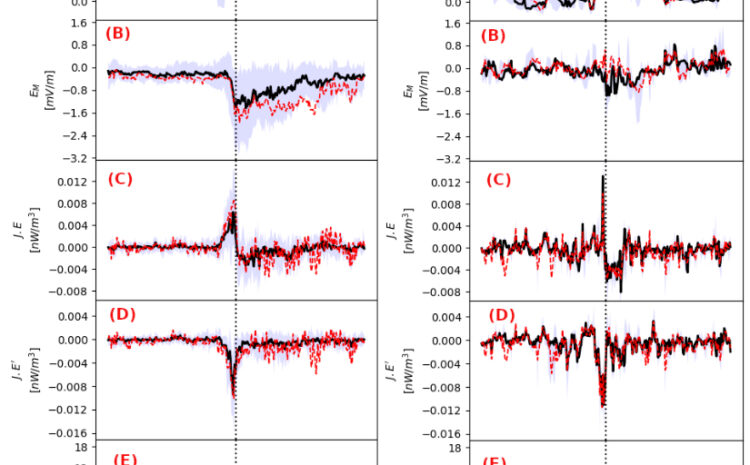Discovery of a new type of Dipolarization fronts on the Earth’s magnetotail

Fast plasma flows in the magnetotail have been investigated for a long time thanks to in situ space measurements. They contribute significantly to the energy, plasma, and magnetic flux transports in the Earth’s magnetosphere. They are thought to be generated by magnetic reconnection, kinetic ballooning interchange instability, or low entropy magnetic flux tubes; they can be related to a global scale substorm activity or appear as isolated structures. Dipolarization fronts (DFs), which are mostly characterized by a sharp and transient increase in the normal component (northward) of the magnetic field in the magnetotail, are formed by the plasma flow propagation or can be also embedded in the flow. The sharp increase in the magnetic field is often interpreted as the magnetic field pile up behind the front.
In a recent paper in the JGR: Space Physics, S. Alqeeq, in Postdoc in the space plasma team at LPP and his collaborators have carried out a statistical study of equatorial DFs detected by the Magnetospheric Multiscale mission during the full 2017 Earth’s magnetotail season. They found that two DF classes are distinguished: class I (74.4%) corresponds to the standard DF properties and energy dissipation and a new class II (25.6%). This new class includes the six DF discussed in Alqeeq et al. 2022 and corresponds to a bump of the magnetic field associated with a minimum in the ion and electron pressures and a reversal of the energy conversion process. Alqeeq et al. have suggested a possible origin of this second class. Both DF classes show that the energy conversion process in the spacecraft frame is driven by the diamagnetic current dominated by the ion pressure gradient. In the fluid frame, it is driven by the electron pressure gradient. In addition, they have shown that the energy conversion processes are not homogeneous at the electron scale mostly due to the variations of the electric fields for both DF classes.
